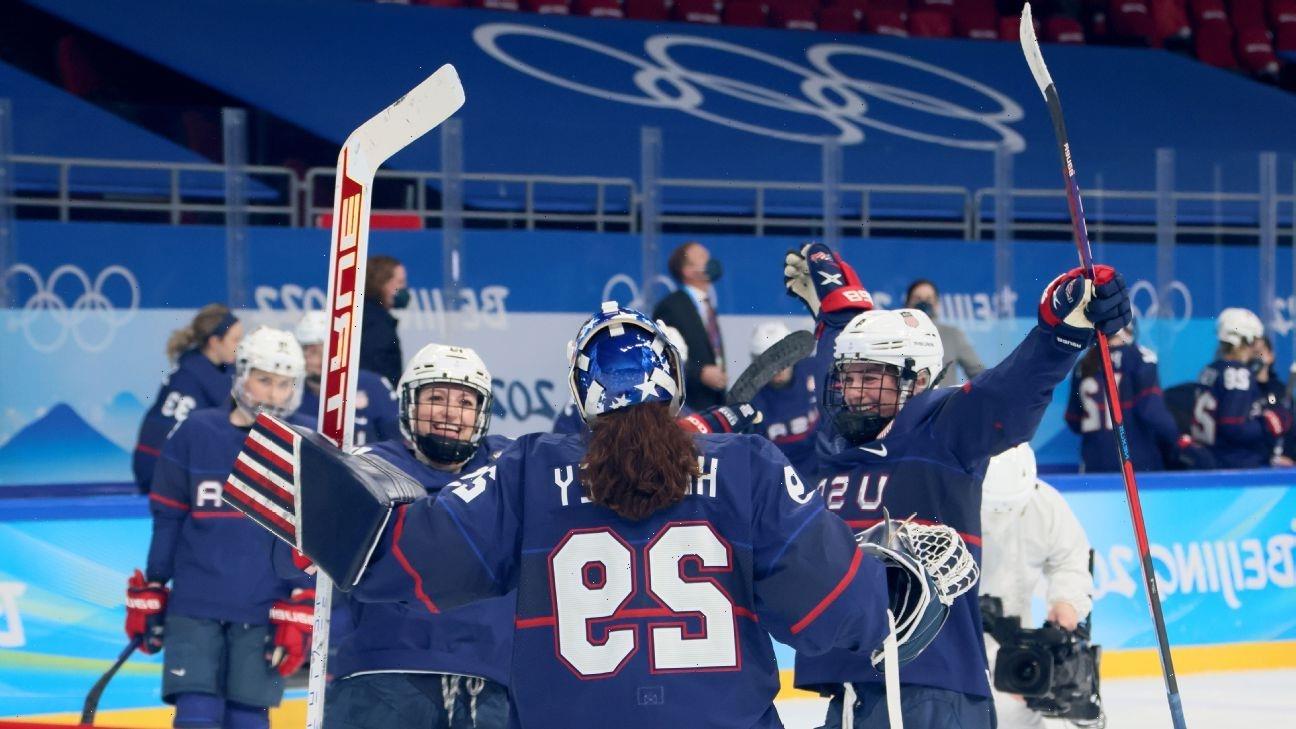- Greg Wyshynski is ESPN’s senior NHL writer.
The most intense and storied rivalry in hockey returns to the ice during tonight’s Winter Olympics action (11:10 p.m. ET) when Team USA and Canada face off in their final women’s tournament preliminary round game.
Both teams are 3-0 in group play. They have combined to outscore their opponents 47-5. They’re on another plane of existence from the rest of international women’s hockey, and that’s been the case for decades.
Since 1998, when the Olympics began its women’s hockey tournament, Canada has won gold four times (2002, 2006, 2010, 2014) while the U.S. has won twice, in 1998 and in 2018, when its 3-2 shootout victory ended a run of two straight gold-medal game losses to Canada.
Winter Olympic schedule | Medal tracker
The dominance of these teams extends past the Olympics. Since 1990, when the International Ice Hockey Federation held its first official women’s world championship, either the U.S. or Canada has won that tournament. In fact, there have only been two championship games since 1990 — the 2006 Olympic final in Torino, Italy, when Canada beat Sweden and the 2019 IIHF worlds final when the U.S. beat Finland — that Canada and Team USA haven’t been the last two teams standing.
“Canada and us, we share a special bond and that makes for great hockey and a beautiful rivalry,” U.S. forward Hilary Knight said after the 8-0 win against Switzerland. “We are really looking forward to it, and I am sure they are too.”
Knight (3 goals, 2 assists in three games) is one of several returning stars in the rivalry for the Winter Games in Beijing. Team USA also has forwards Amanda Kessel (2 goals, 3 assists) and Kendall Coyne Schofield (2 goals, 1 assist) back from the gold medal-winning team. Canada returns star forward Natalie Spooner (2 goals, 10 assists), who leads the 2022 Olympics in scoring; forwards Sarah Nurse (4 goals, 3 assists) and Rebecca Johnston (2 goals, 4 assists), who is in her fourth Olympics; and forward Marie-Philip Poulin (1 goal, 5 assists), who scored two goals in Canada’s gold medal wins in 2010 and 2014 over the Americans.
Keep in mind that this game is merely for seeding purposes. All the teams in Group A, which contains Canada and the U.S., automatically advance to the quarterfinals.
Granted, any time these rivals meet, it’s not really about “seeding purposes.”
State of the rivalry
After losing the gold-medal game in the 2014 Winter Olympics in Sochi, the Americans won the next three IIHF world championships over Canada. They then defeated their archrivals for Olympic gold in Pyeongchang in 2018. The teams didn’t meet again for a championship until 2021, when Canada defeated the U.S. 3-2 in overtime to win the IIHF world championship for the first time since 2012.
What was scheduled to be a nine-game “rivalry series” leading up to the 2022 Winter Games was cut short due the COVID-19 pandemic. But the teams played six games from October to December, and Canada won four of them, including the final two played in St. Louis. Three of the games went to overtime. Four games were decided by one goal.
“Our team is right where we need to be at the right time,” Kessel said. “We had a bunch of games canceled against them the past few months, so we have been waiting for that day to get another chance to play them.”
New faces
The U.S. lost some key players from the team that defeated Canada for gold in Pyeongchang. Twins Monique Lamoureux-Morando and Jocelyne Lamoureux-Davidson, who scored the shootout goal to win gold, have both retired. Forwards Meghan Duggan and Gigi Marvin, as well as defender Kacey Bellamy, also moved on. The Americans have 13 players on their roster who won gold in South Korea, but one of the key returnees won’t play for the rest of the tournament in Beijing: Forward Brianna Decker, who injured her leg in a fall in the opening win over Finland.
Among the new players making an impact for the U.S. are defender Savannah Harmon, who has a goal and four assists in three games; and forwards Jesse Compher and Alex Carpenter, who both have three goals and an assist in three games. Carpenter is both a new face and familiar one: She competed for the U.S. in the 2014 Sochi Olympic but was left off the roster in 2018.
The most significant name missing for Canada: Goalie Shannon Szabados, 35, who has been a part of every Olympic team the country has had since 2006 and is one of the most dominant netminders in women’s hockey history. The Canadians have 13 players from the team that lost in Pyeongchang returning here, although key 2018 players forward Meghan Agosta and defender Laura Fortino aren’t among them.
Among the new faces, one clearly stands out: Forward Sarah Fillier, who at 21 years old is the youngest player on the roster. She has five goals in her first three Olympic games. The record for goals in the Olympic tournament is nine, and she’s over halfway there before the prelims are over.
What the stats say
Canada has rolled through its three preliminary wins with a goal differential of +26, scoring 29 goals and surrendering three. The U.S. is second in goal differential (+16), scoring 18 goals and giving up just 2. It’s outshooting Canada 180-167 in those games but Canada has an incredible 17.4% shooting percentage for the tournament.
Special teams are something to keep an eye on. Canada has the tournament’s most proficient power play (41.7% conversion rate for five goals). The U.S. has scored three goals on 13 power-play chances (23.1%). That’s a good sign: Its power play went 3-for-25 in last year’s world championships and 4-for-20 against Canada in the exhibition series.
More troubling for the U.S. in Beijing has been its penalty kill. The good news is that it has only been shorthanded six times. They bad news is that it has given up two power-play goals in those chances. Canada, meanwhile, has killed off 16 of 17 opponents’ power plays.
Expect a tight game. Expect a physical game. Expect an intense game. Expect nothing less from USA vs. Canada.
Source: Read Full Article






